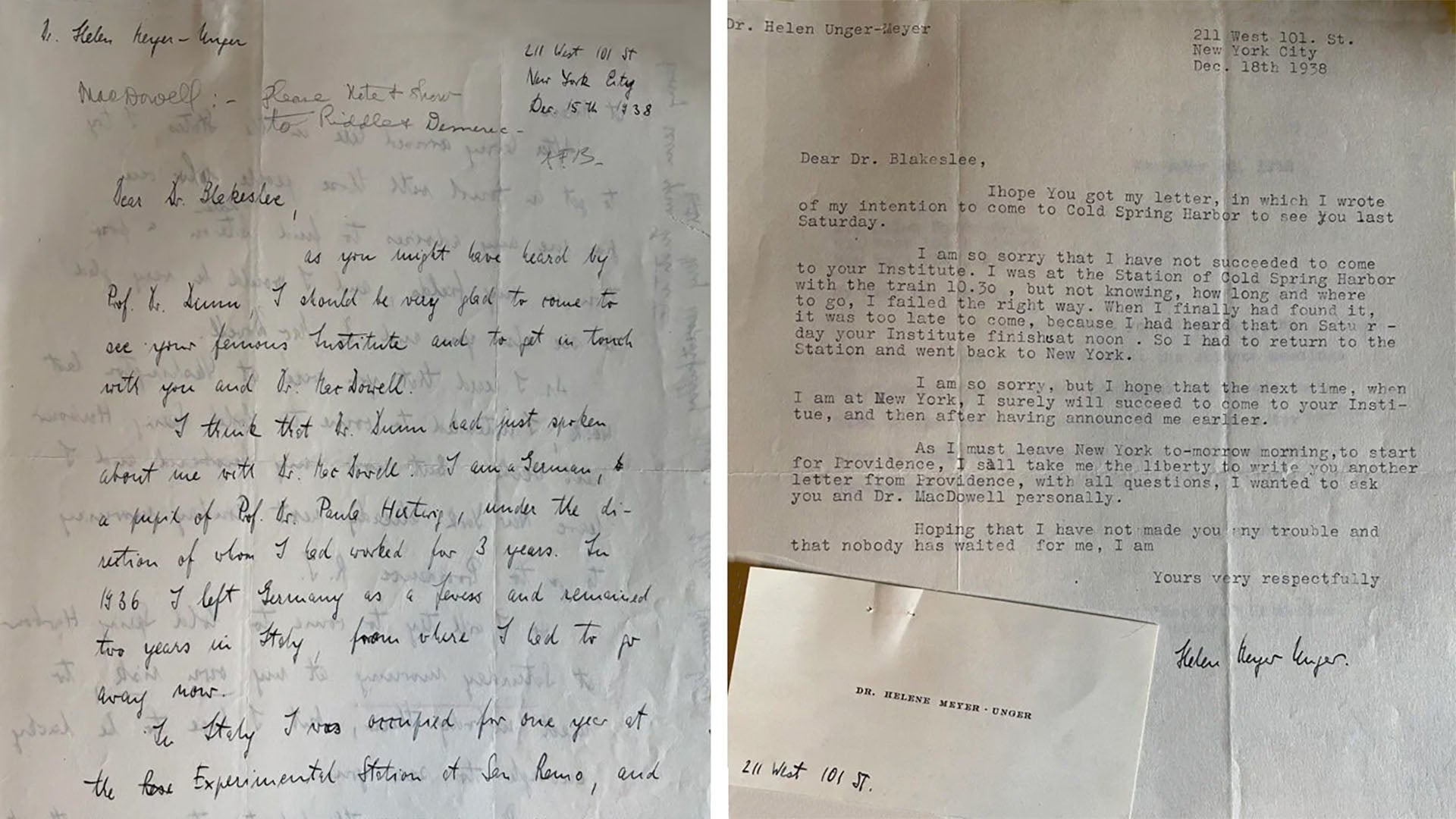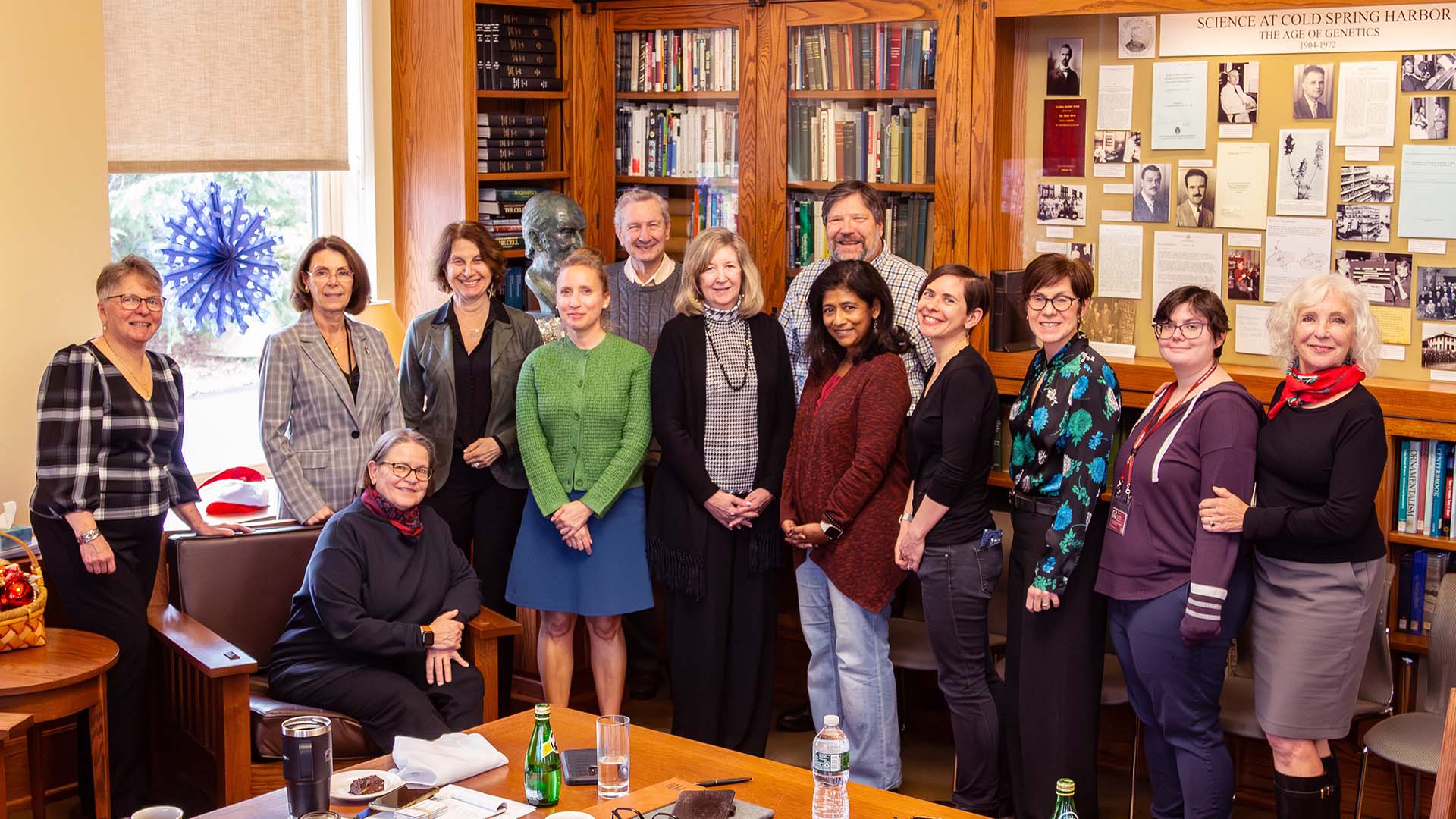During World War II, many displaced scientists were forced to search for a new life. One particular biologist, Dr. Helene Meyer-Unger, ended up in New York City. When she learned about the pioneering research happening at Cold Spring Harbor Laboratory (CSHL), she sent a letter to the lab hoping for a chance to continue doing what she loved. She’d hoped to avoid deportation by securing a job. At least one CSHL employee who reviewed her credentials was impressed, writing “seems like a well-trained person in cytology and genetics” on the back of her card. Unfortunately, Meyer-Unger never made it to CSHL. As far as local records are concerned, her fate remains a mystery.
This is just one of dozens of stories that historian Antoinette Sutto has researched while working at the CSHL Library & Archives. The Library is a rich resource for anyone interested in the interwoven histories of CSHL and Long Island. It’s open to scholars, students, and the general public (in-person by appointment or online anytime). A combination of books, journals, and digital materials, its collections span a broad range of topics going back over 100 years.

The Library recently hosted a workshop to bring together scholars and archivists from communities across Long Island. The workshop helped to connect local historians with one another and familiarize them with the resources the Library has to offer. It also served as an introduction to the Library’s new exhibit on “Plant Science, Biotechnology, and Agriculture” supported by the Robert D. L. Gardiner Foundation. And it was here that Sutto shared Dr. Meyer-Unger’s story.
“People think of our archival collections as very much focused on the technicalities of the history of the life sciences,” says Sutto, a Robert D. L. Gardiner Foundation fellow. “But there’s a lot of stuff in there with themes that are way bigger than the four walls of the lab—that go beyond the history of science. We want to know what happened but also why is it important for people today.”
Questions like this continue to inform Sutto’s work as she’s now conducting research for an exhibit with significant connections to Long Island’s past, present, and possible future. Its topic? The history of biotechnology on Long Island. Its home? Where else but Cold Spring Harbor Laboratory.
Written by: Luis Sandoval, Communications Specialist | sandova@cshl.edu | 516-367-6826
